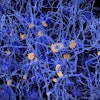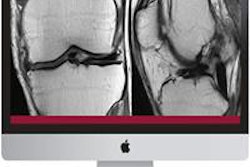Dear MRI Insider,
The question of whether and when to image an athlete's injury can ignite debate among general practitioners, orthopedic and neurologic specialists, and radiologists. While MRI, CT, x-ray, or ultrasound may be the first instinct, there are other issues to consider, such as the cost and necessity of the exam and the potential for overutilization.
To help clarify the appropriate circumstances in which to image, the American Medical Society for Sports Medicine recently released a list of recommendations for sports-related injuries. Our Insider Exclusive details the group's observations and takes comments from two radiologists on imaging appropriately and issues that can complicate the decision to order a scan.
In other features, a new teaching tool called Real View Radiology is showing early signs of success by improving the ability of first- and second-year residents to interpret musculoskeletal MRI cases. The system was developed by a group of residents at IU Health, the health system affiliated with Indiana University. In their study, Real View Radiology significantly increased confidence scores among junior residents after training, compared with results from untrained third-year residents. The trained cohort also outperformed the untrained group on overall confidence scores for knee and shoulder images.
Meanwhile, researchers from Oklahoma used MRI to uncover smaller hippocampal volumes among collegiate football players with a history of concussion or who had played for more years than their teammates. The group also found a correlation between playing football and reaction time: The more years an athlete had played, the slower the reaction time.
In news from the American Roentgen Ray Society annual meeting, pulmonary MRI can be used to evaluate acute pulmonary embolism, offering an alternative for patients who can't undergo CT pulmonary angiography or who are allergic to iodinated contrast agents, according to researchers from Turkey. The study of 48 patients found that three pulmonary MRI techniques yielded performance that could be valuable in a number of clinical scenarios.
Finally, a new software algorithm developed by a Canadian research team could help radiologists detect changes in follow-up brain MRI studies. The software, called EigenBlock Change Detection, is designed to automatically perform image registration and calculate any changes between studies. Experimental results with both simulated and real MRI scans show that it outperforms previous methods for detecting changes, according to the group.
Stay in touch with the MRI Digital Community on a daily basis for the latest news and novel research from around the world.


.fFmgij6Hin.png?auto=compress%2Cformat&fit=crop&h=100&q=70&w=100)





.fFmgij6Hin.png?auto=compress%2Cformat&fit=crop&h=167&q=70&w=250)











